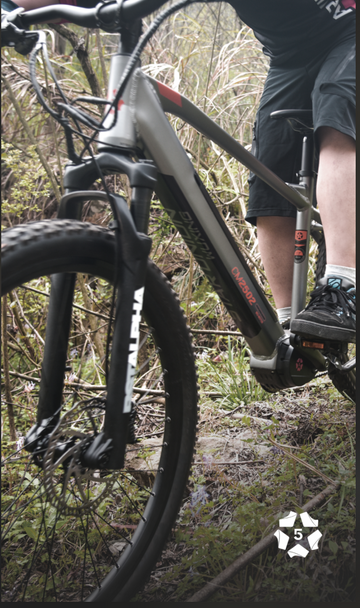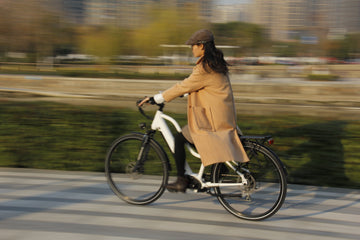Precautions for Using Hydraulic Disc Brakes in Harsh Weather Conditions
by RitterRuo on Feb 19, 2025

Hydraulic disc brakes are widely used on electric bikes (e-bikes), mountain bikes (MTBs), and road bikes due to their strong braking power and smooth operation. However, their performance can be affected by harsh weather conditions such as rain, snow, mud, or extreme cold. Proper usage and maintenance are essential to ensure optimal braking performance.
1. Riding in the Rain – Prevent Slipping & Maintain Braking Efficiency
Wet road surfaces can increase braking distance and reduce traction. To maintain optimal braking performance, follow these tips:
- Brake early and avoid sudden braking: Reduced friction on wet roads increases the risk of skidding. Apply brakes gradually using a pulsing technique instead of abrupt braking.
- Check brake pad wear: Moisture accelerates brake pad wear. Inspect your brake pads regularly and replace them when needed.
- Clean the rotors to prevent debris buildup: Rainwater can carry dirt and grime that stick to the brake rotors. After riding, wipe the rotors with a clean cloth or alcohol to prevent noise and performance degradation.
2. Riding in Snow – How Cold Temperatures Affect Hydraulic Fluid
At freezing temperatures, the viscosity of hydraulic fluid increases, which may cause stiff braking or system failure. Here’s how to counteract the effects of cold weather:
- Use brake fluid with better low-temperature performance: Different brake fluids (Mineral Oil vs. DOT) behave differently in cold weather. Choose DOT 5.1 or special low-temperature mineral oil for better performance.
- Pre-warm the brake system: Before riding in extremely cold conditions, gently squeeze the brake levers multiple times to circulate the fluid and improve responsiveness.
- Avoid leaving the bike outdoors for extended periods: Store your bike indoors whenever possible to prevent hydraulic fluid from thickening due to prolonged exposure to low temperatures.
3. Muddy Terrain – How to Minimize the Impact of Dirt & Water on Braking
Off-road cycling on muddy paths can cause dirt and debris to enter the brake system, affecting braking performance and durability. To ride safely, consider these tips:
- Install mudguards: These help reduce the amount of water and dirt splashing onto the rotors, improving braking stability.
- Regularly clean the brake system: After riding in muddy conditions, rinse off dirt using water, but avoid using high-pressure sprays directly on the brake rotors to prevent contamination.
- Check for abnormal brake noise: If you hear a high-pitched squeal, dirt or oil may have contaminated the rotors. Use a dedicated disc brake cleaner to restore braking efficiency.
4. Emergency Preparedness – Advantages of E-bike Brake Cutoff Sensors
Some hydraulic disc brakes feature a brake cutoff sensor (used in e-bikes) that enhances safety in harsh conditions:
- Instantly cuts motor power when braking to prevent uncontrolled movement.
- Ideal for high-speed riding or slippery roads, ensuring maximum safety.
- Regularly check the brake cutoff wire to ensure a fast and accurate braking response.
Hydraulic disc brakes offer superior performance in harsh weather conditions compared to traditional rim brakes. However, proper usage and maintenance are crucial to ensure safety and longevity. By following these rain, snow, and mud riding techniques, you can improve braking efficiency and prolong the lifespan of your brake system. Choose high-quality hydraulic disc brakes and maintain them properly for a safer and more stable riding experience.




